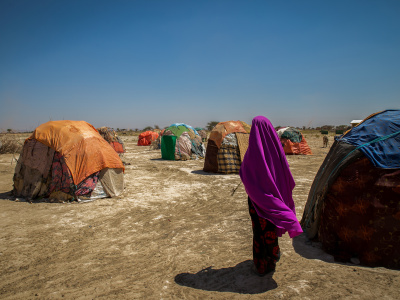
Dynamics of Regional Action in Peace and Security in Africa: Four Drivers
What are the drivers behind regional action in the realm of peace and security in Africa? The political economy of violent conflict and peacebuilding in Africa is complex. Violent conflict occurs on the local, national, regional, continental and international level and these various levels interact.
Indeed the challenges of the Sahel, Horn of Africa and African Great Lakes regions are enduring examples of complexity. Since 2002 Africa has designed and enacted a complex and comprehensive system in its African Peace and Security Architecture (APSA) involving the African Union (AU), member-states, regional economic communities (RECS), civil society and international partners to respond to this. This article chooses four drivers of action and inaction within Africa on African Peace Support Operations to explore the dynamics of responding to peace and security challenges.(2)
1. Continental political dynamics
Given that the AU’s Peace and Security Council (PSC) has to authorise African action on peace and security issues, it is clear that the interests of member states on the PSC are the main ‘gatekeeper’ or ‘door opener’. ‘Decisions regarding the deployment of an African Peace Support Operation (PSOs) will therefore depend, among other things, on the interests and political dynamics of members of the PSC [at the time] and the strength and diplomatic skills of the Chairperson of the PSC in any given crisis situation’. (3) While the PSC draws its legitimacy from the way its members are elected, some commentators have questioned the ability of members to act in the best interests of the AU’s collectively agreed norms, given their own domestic agendas. (4) Competition between individual member-states, RECs and the AU has also in the past led to competition for leadership in response to conflicts.
2. Regional political dynamics
The RECs have been pioneers in the area of peace and security, especially ECOWAS in terms of peacekeeping, SADC in terms of mediation and IGAD in terms of early warning related to pastoralist conflict. Yet, the role of countries shines through even in those areas for which the RECs are renowned. ECOWAS peacekeeping was championed by Nigeria, SADC’s mediation by South Africa, and IGAD’s early warning doesn't cover issues sensitive for its member-states. RECs are only as powerful as their member-states are willing to make them. The lack of a REC for North Africa is a result of the historic rivalry and deep mistrust on security issues between North African countries. This resulted in a much weaker African response to the Arab spring generally and current crisis in Egypt.
The hegemonic roles of South Africa and Nigeria have been instrumental in the effective implementation of sub-regional peace and security initiatives in SADC and ECOWAS. In addition, IGAD’s weakness has been put down partly to the absence of a dominant regional hegemon and the rivalry between IGAD member states who view each other as equals. Another sub-region where the absence of an uncontested leader has undermined common dynamics for peace and security is Central Africa. Yet South Africa and Nigeria’s roles may also be seen as sources of tension which could hamper APSA. (5) South Africa’s role in Africa is central: its military is well equipped and trained, and it has the economic resources needed to conduct major missions. (6) South Africa supplied large numbers of troops to the African Mission in Burundi (AMIB) and African Mission in Sudan; “even though AMIB was an AU mission on paper, it was completely dependent on one single troop-contributing country [South Africa]”. (7) At the same time, there is a certain reluctance to rely on South Africa, due to fears of South African dominance in the region and intra-regional competition for influence. (8)
Certain regional ‘middle powers’ in the SADC region have sometimes managed to bypass South Africa and launch military missions that were more robust than simply peacekeeping. Angola, Namibia and Zimbabwe intervened militarily in the DRC in 1998 in response to the government’s request to SADC. This military involvement was at odds with the position of the South African government, which preferred negotiation to solve the conflict. More fundamentally some analysts have cast doubts as to whether the collective SADC Standby Force would ever be deployed in the region as a whole because states interests rarely align fully. (9)
3. Prestige, visibility and risk
Prestige and visibility also provide incentives for participation, particularly for smaller states or those recovering from conflict themselves in African Peace Security Operations (PSO). Tanzania for example actively championed ‘Operation Democracy’ in the Comoros, without much prior or subsequent engagement in APSA. This can be explained to a certain extent by the fact that the Tanzanian President was chairing the AU. (10) A Burundian diplomat described his country’s engagement in AMISOM in the East African; ‘we are taken seriously in several international forums these days’ and, ‘we are sitting at tables that we might not have been allowed even to lay for others a few years ago’. (11) For Uganda too, it would appear that there was prestige in being the lead military contingent in AMISOM, ‘if other African countries were to contribute to AMISOM, Uganda would probably also boost its numbers, so that it can maintain its head honcho status in Mogadishu.’(12)
Strategic national interest is a key driver of costly political and military engagement in regional initiatives. For example, ECOMOG’s (the Economic Community of West African States Monitoring Group) intervention in Liberia in 1989, broadly considered as the first African regional security initiative, was driven by several motivations, the dominant one being the desire to minimise the risk of the conflict spreading to neighbouring states. Avoiding spillover was also behind the creation of the African-led International Support Mission to Mali in 2013. The ‘interests’ of political decision-makers in receiving states in having African PSOs rather than the alternative of a UN operation or none at all is a key part of dynamics. The AU’s second PSO, AMIS followed in response to the Sudanese government’s denial of a UN peace operation after a cease-fire agreement was signed in 2004.(13)
While prestige and visibility may bring political rewards, the heightened danger of missions may also be a political risk. Outside of AU or UN authorization the domestic political risk is even higher if things go wrong. South Africa discovered this in the Central African Republic in March 2013, where some accused SA of more direct economic interests for its military deployment. (14) Yet even within AU sanctioned PSO there is a significant domestic political risk in deploying forces. If circumstances are unclear in terms of the success of a mission, the resources needed and the potential casualties, countries may renege on their commitment to deploy. This was the case with Nigeria, Ghana and Senegal with AMIB and with South Africa, Nigeria, and Senegal with regard to AMISOM (15), using the high risk factor as argument to renege. The dramatic events in Nairobi’s Westgate mall in September 2013 also illustrate the domestic risks of the fallout of being involved in PSOs – yet the counter argument can also be made that not engaging in Somalia is more risky. In contrast, the relatively limited AU mission in the Comoros had strong sponsorship from the AUC and engagement by AU member states (particularly Tanzania and Sudan) largely because the degree of risk and the regional fall-out was low.
4. Financial means
It is fair to wonder how much progress would have been made in African regional integration in peace and security without external financial support. For AMISOM, Uganda has made it clear that the Ugandans would be ready to deploy if the US is prepared to pay for the deployment. (16) The African Chief of Defence Staff noted with regard to the APSA and African PSOs: ‘[the] lack of central funding and reimbursement of peacekeeping costs have severely inhibited the full participation of less endowed member states. This situation has undermined multinational efforts of the region and engendered sub-regional polarisation.' (17) Yet ‘African states contribute less than 1% of their defence budgets to fund the ASF and support staff.’ (18) The current Chair of the AUC has made African financing for peace and security one of her top priorities. Beyond the aspect of institutional funding is the financial gain received by individual soldiers or battalion commanders taking part in African PSOs which is another factor in participation: ‘The average tour of duty for a Burundian soldier in Somalia is one year, so he comes out of there $9,000 richer. If he had stayed home, he would have earned only a miserable $240 in the same year.' (19)
Conclusion
Given these drivers and difficult dynamics that affect African responses to peace and conflict, the development of the regional and continental architecture through APSA is hugely impressive. Other regions like Latin America, Eurasia, North East and South East Asia, and the Middle East have been unable to develop such capabilities precisely because the political economy of state interests would not allow it. Even the EU’s Common Defence and Security Policy itself has many of the same operational challenges of APSA with member-states committing on one level but being unwilling to really integrate to the level where decisions on military deployment are taken collectively. Although APSA always has to navigate the political economy of various states interests in the continent it would almost certainly be the poorer and more violent without it.
Andrew Sherriff is Head of Programme EU External Action at ECDPM.
Footnotes
- Thanks to Volker Hauck and Damien Helly for comments on this article and also to Eleanor Koeb, Simone Goertz and Faten Aggad who provided input to earlier piece from which this is drawn.
- There is obviously also a strong international dynamic which is beyond the scope of this short article.
- Center for Security Studies. 2010. The African Standby Force Put to the Test. CSS Analysis in Security Policy. (No. 84, November 2010): page 3
- Williams, P. D. 2010, Autocrats United? The Peace and Security Council of the AU , Center for Strategic and International Studies, May 16th.
- Center for Security Studies, op cite, page 1
- Directorate General External Policies of the Union (with Chatham House) 2008. Options for the EU to support the APSA. Brussels: European Parliament: p. 22-23
- Svensson, E. 2008, The African Mission in Burundi Lessons Learned from the AU’s first Peace Operation, Swedish Defence Academy, September., p. 17.
- Directorate General External Policies of the Union, op cit.
- Baker, D. and S. Maeresera. 2009. SADCBRIG intervention in SADC member states: Reasons to doubt. African Security Review. 18(1): 106-110
- Svensson, E., 2008 The AU ’s Operations in the Comoros, Swedish Defence Analysis, September 2008., p 16.11. Onyango-Obbo, C. 20
- ‘Somalia is sweet and sour business for Burundi, Uganda’, East African, March 14
- ibid.
- Cf. Williams, P. D. 2009. The AU ’s Peace Operations: A Comparative Analysis. In: Söderbaum, F./Tavares, R. (eds.) African Security, 2 (2-3) 01 May 2009: p. 102.
- Amabhungane Reporters http://mg.co.za/author/amabhungane-reporters, 2013 Central African Republic: Is this what our soldiers died for?, Mail & Guardian, 28th March.
- Svensson, E. 2008, The African Mission in Burundi Lessons Learned from the AU ’s first Peace Operation, Swedish Defence Academy, September.
- Olukya, G. 2010. Uganda asks US help to send 10k troops to Somalia, Associated Press, 1st of September 2010.
- ASF Policy Framework p.12.
- Burgess, S. 2009. Stabilization, Peacebuilding, and Sustainability in the Horn of Africa. Strategic Studies Quarterly. 3(1):81-118: p. 102
- Onyango-Obbo op.cite
This article was published in GREAT Insights Volume 2, Issue 7 (October 2013).


